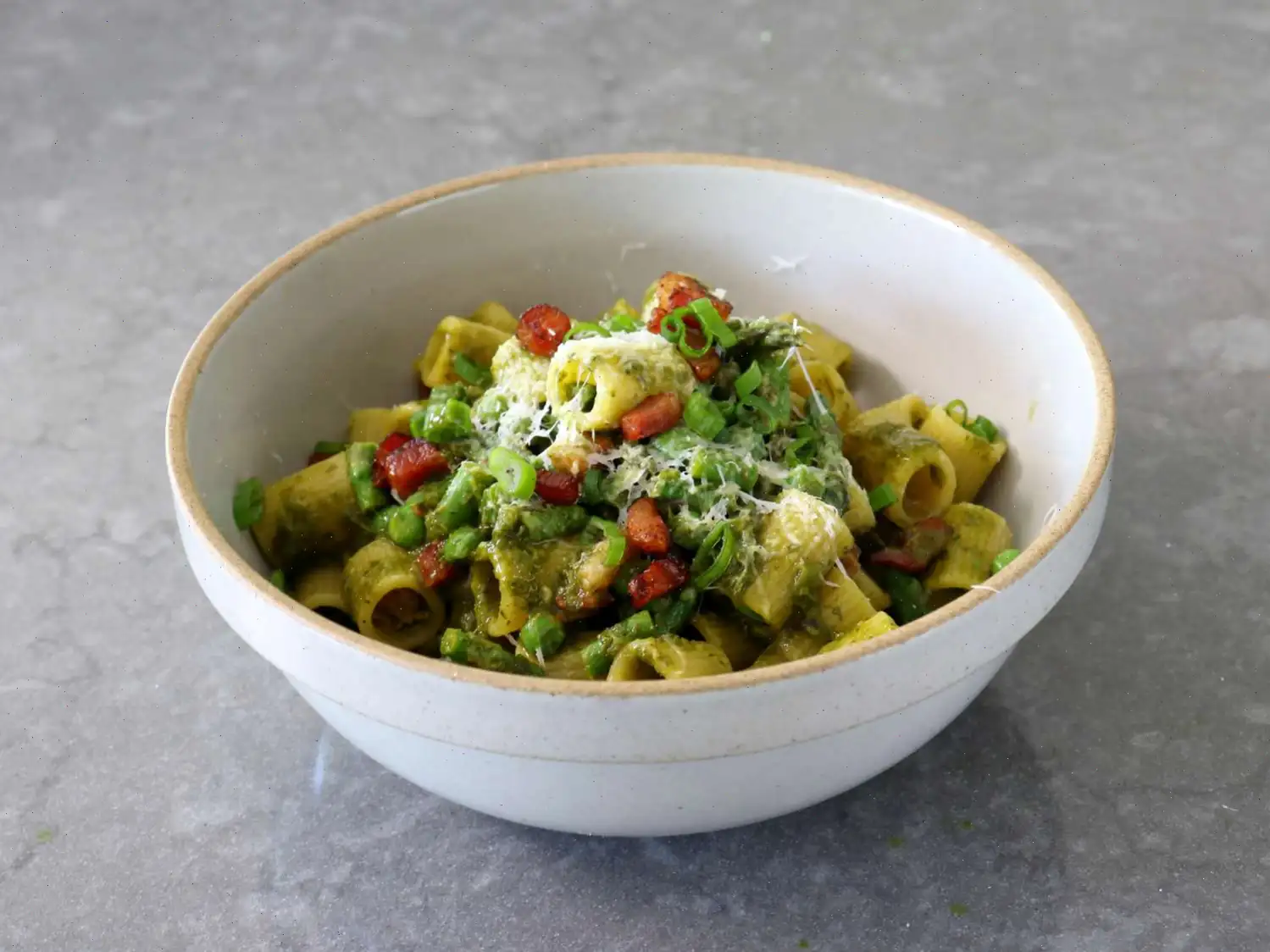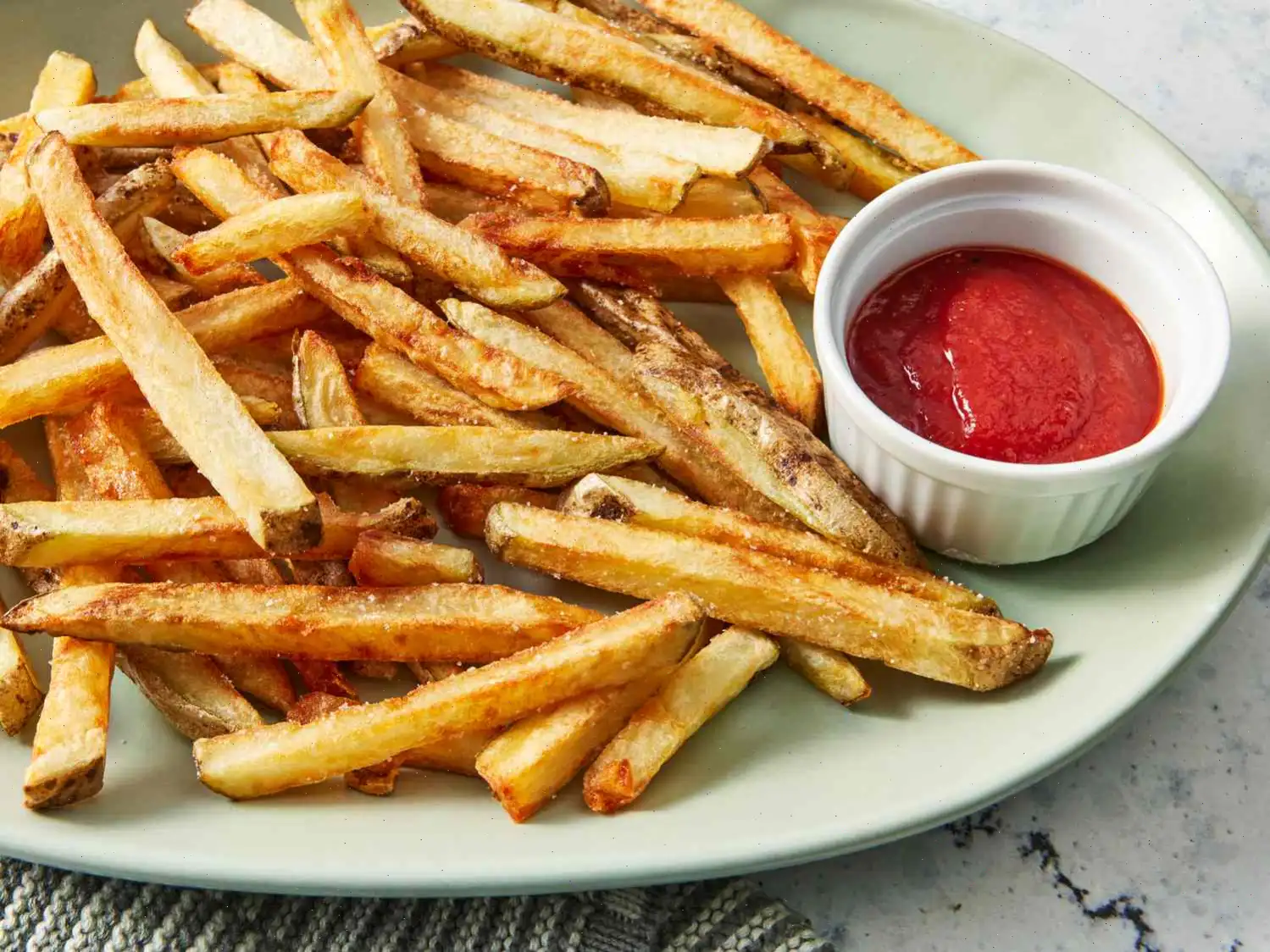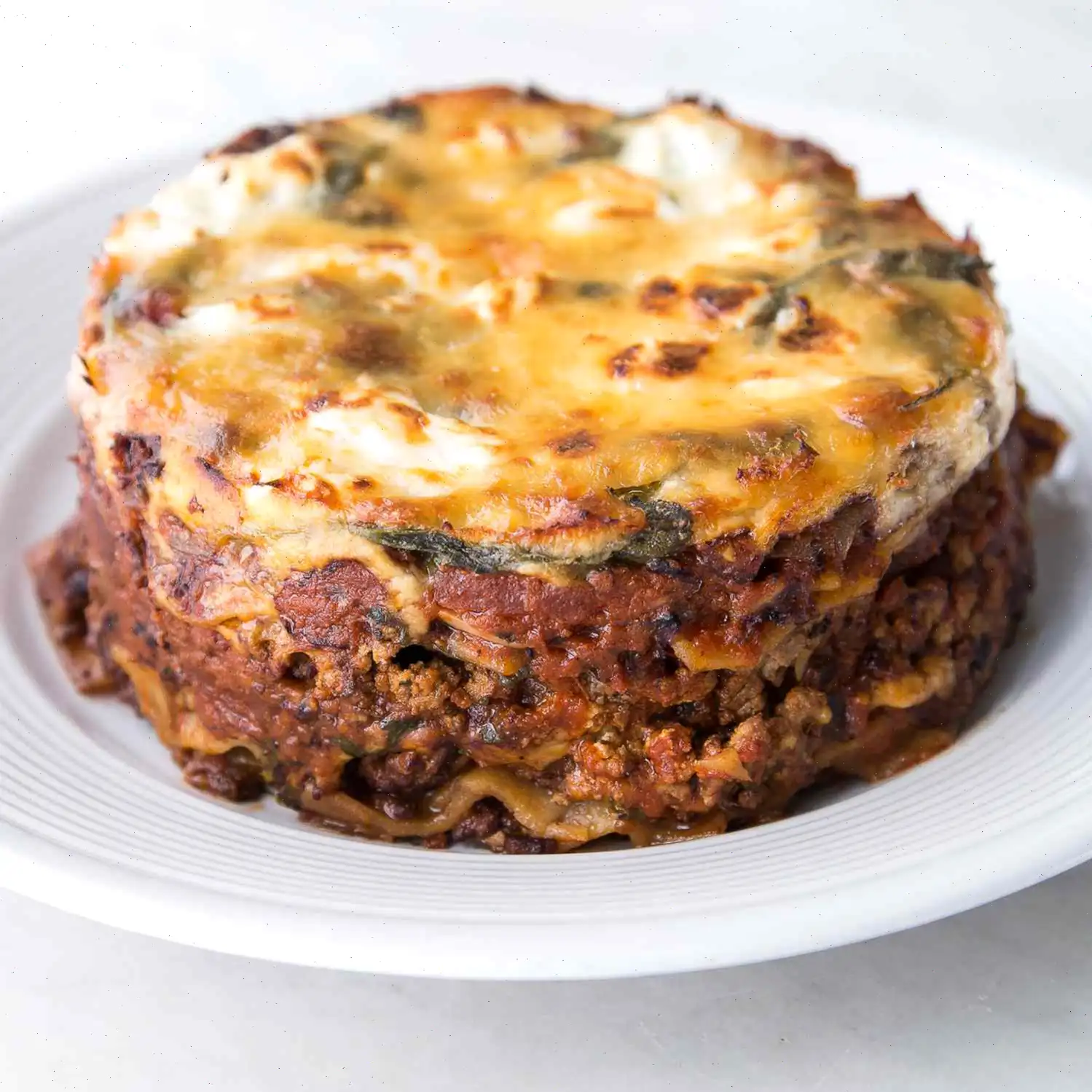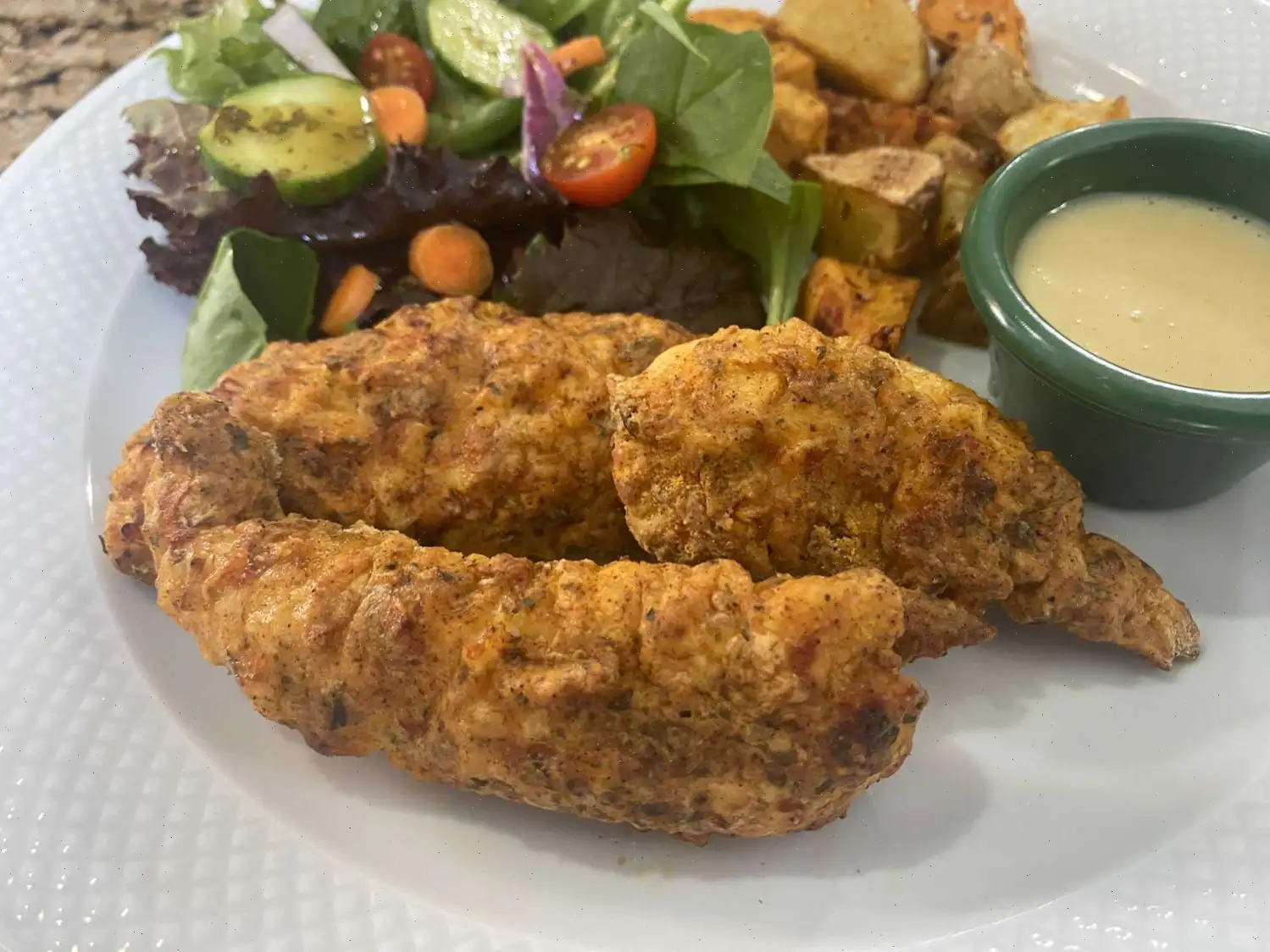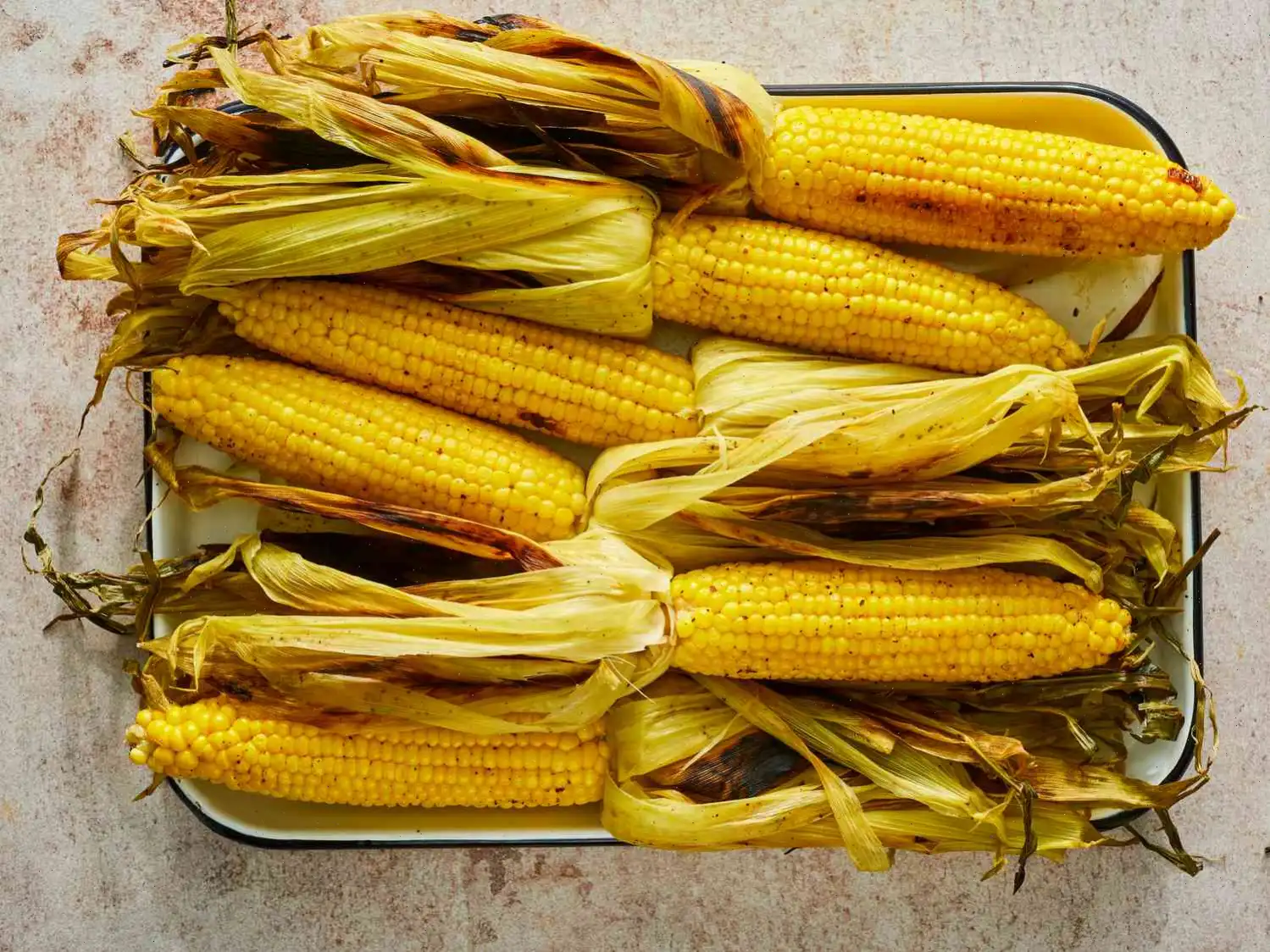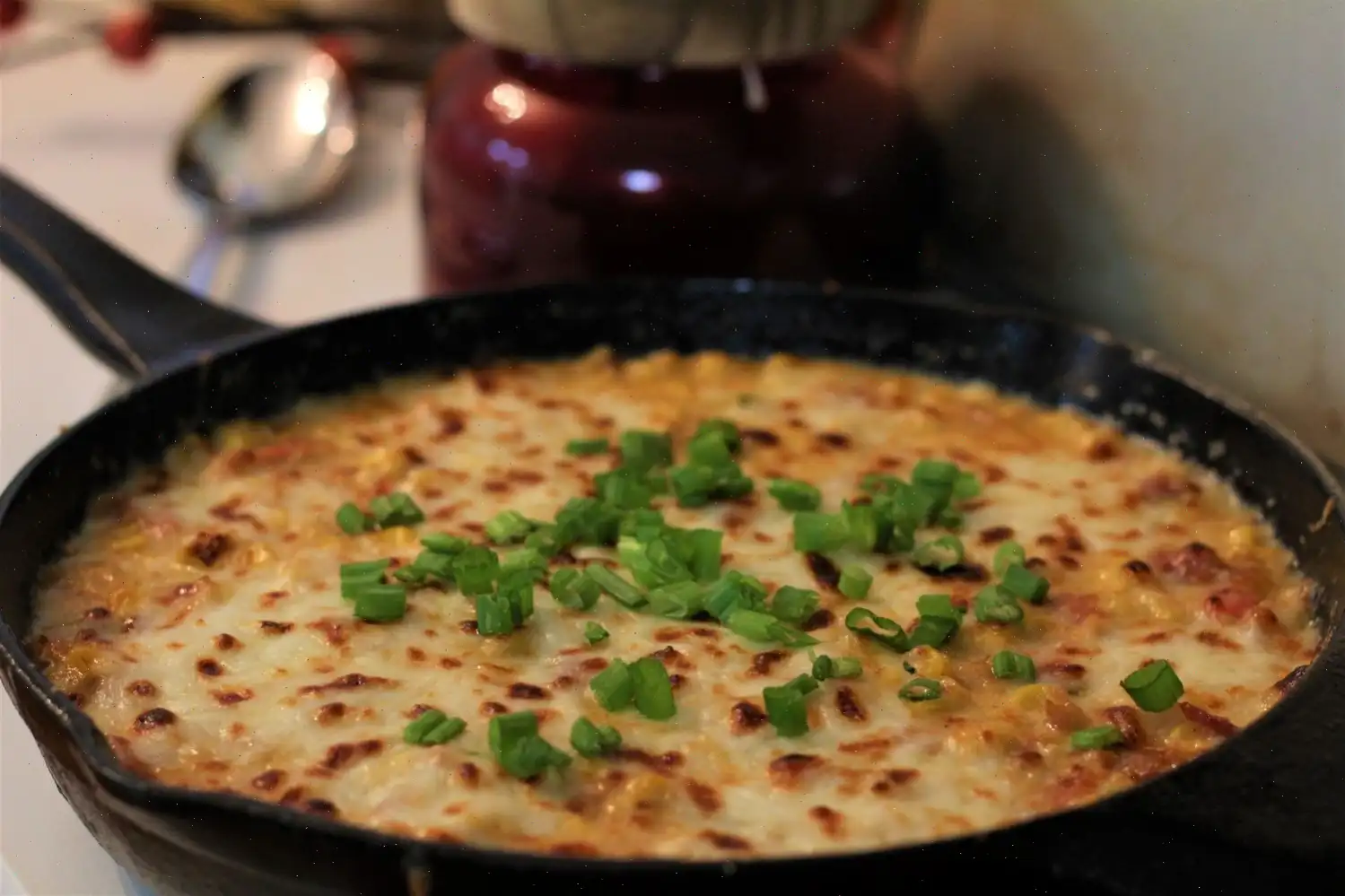
Pancetta Primavera Rigatoni Recipe
Every year around this time, pasta primavera recipes start to appear everywhere, like the first flowers of spring. They're often vegetarian, which is great, but to make this dish stand out, adding pancetta (or Italian bacon ) takes it to the next level. The result is a perfectly balanced, delicious bowl of pasta that's both rich and fresh. Though you can substitute regular bacon, pancettas distinct, non-smoked flavor really makes this dish special. You can also add other seasonal vegetables as long as you cook them ahead or chop them small enough to cook with the pasta. No matter what you choose, this combination of pancetta, fresh veggies, and an herby sauce is a flavor explosion.
Ingredients:
- 3 tablespoons olive oil, divided
- 8 ounces pancetta, diced
- 1/4 cup sliced green onions
- 8 ounces mezzi rigatoni pasta
- 1 cup shelled fresh English peas
- 1 cup asparagus, cut into 1/2-inch pieces
- 1 cup Italian parsley leaves
- 1 cup basil leaves
- 1/2 cup packed mint leaves
- 3 cloves garlic, peeled
- 1/2 lemon, juiced
- 1/2 teaspoon kosher salt, plus more to taste
- 1/4 cup water
- 1/2 cup grated Pecorino cheese, plus more as needed
Directions:
Step 1: Pour 2 tablespoons of olive oil into a large pan over medium heat. Add the diced pancetta and cook, stirring occasionally, until browned and most of the fat has rendered out (7 to 10 minutes). Turn off the heat.
Step 2: Remove a portion of the pancetta and set aside to garnish the top later. If you prefer, you can pour out some of the excess pancetta fat from the pan, but leave at least 2 or 3 tablespoons in the pan.
Step 3: Add the sliced green onions to the pan and turn the heat to medium-low. Saut the onions for a few minutes until softened slightly, then turn off the heat and set aside while you cook the pasta.
Step 4: While the pancetta is cooking, bring a pot of well-salted water to a boil. Add the rigatoni and set a timer for 2 minutes less than the recommended cooking time (about 7 minutes for mezzi rigatoni). Stir occasionally.
Step 5: Meanwhile, combine the parsley, basil, mint, garlic, lemon juice, and water in a blender or with an immersion blender. Blend until smooth. Set aside.
Step 6: When the pasta timer goes off, add the asparagus and peas. Continue cooking for 2 more minutes, or until the pasta is al dente. Use a strainer to transfer the pasta and vegetables to the pan with the pancetta.
Step 7: Turn the heat to medium-low and pour in the herb mixture. Stir everything together until combined. Season with salt to taste and drizzle in about 1 tablespoon of olive oil. Add 1/4 cup of the pasta cooking water, and stir until everything is heated through.
Step 8: Turn off the heat, then stir in the grated Pecorino cheese. Taste and adjust seasoning if needed. Serve immediately, garnished with more cheese, reserved pancetta, and extra sliced green onions.
Nutrition Facts (per serving):
- Calories: 574
- Total Fat: 44g (56% Daily Value)
- Saturated Fat: 14g (71% Daily Value)
- Cholesterol: 51mg (17% Daily Value)
- Sodium: 339mg (15% Daily Value)
- Total Carbohydrates: 30g (11% Daily Value)
- Dietary Fiber: 5g (19% Daily Value)
- Total Sugars: 4g
- Protein: 16g (32% Daily Value)
- Vitamin C: 43mg (48% Daily Value)
- Calcium: 184mg (14% Daily Value)
- Iron: 4mg (21% Daily Value)
- Potassium: 515mg (11% Daily Value)
The Story Behind Pancetta Primavera Rigatoni
Pancetta Primavera Rigatoni is a modern twist on the classic Italian pasta primavera, which emerged in the United States during the 1970s. The original pasta primavera was popularized by Italian-American chefs who sought to celebrate fresh spring vegetables in a simple pasta dish. Adding pancetta, a traditional Italian cured pork, transforms this originally vegetarian dish into a richer, more savory experience. The combination of tender rigatoni, crisp vegetables, and aromatic herbs reflects both Italian culinary traditions and American creativity, giving diners a dish that balances indulgence with freshness.
Regional Characteristics
This dish has strong ties to Northern and Central Italy, where pasta and cured meats like pancetta are staples. In Italy, variations often highlight local vegetables, such as asparagus in Lombardy or peas in Emilia-Romagna, and use fresh herbs like basil and parsley. Unlike classic southern Italian recipes, which might emphasize tomato sauces or olive oil as the dominant flavor, Pancetta Primavera Rigatoni focuses on a delicate blend of herbs and the savory, fatty richness of pancetta, creating a lighter yet flavorful profile that is ideal for spring and summer dining.
How It Differs From Similar Dishes
While similar to traditional pasta primavera, this version stands out due to the inclusion of pancetta, which adds a smoky, salty depth absent in vegetarian versions. Unlike carbonara, which also uses pancetta, eggs, and cheese, this dish incorporates fresh herbs, lemon juice, and spring vegetables, creating a bright and colorful presentation. Compared to a standard rigatoni with cream sauce, the herb sauce here is lighter, allowing the natural flavors of vegetables and pancetta to shine without being overpowered by dairy.
Where Youll Find It Served
Pancetta Primavera Rigatoni is commonly featured in Italian-American restaurants and upscale bistros that celebrate seasonal produce. It is also a favorite at home dinner parties because it offers elegance without complicated preparation. In Italy, it might appear in trattorias during spring, paired with a crisp white wine to complement the fresh, herbaceous flavors. In the U.S., it is often served as a main course for lunch or dinner, sometimes accompanied by a light salad and freshly baked bread.
Interesting Facts
- Pancetta is different from bacon because it is unsmoked and seasoned primarily with salt, pepper, and spices, giving it a subtler, more versatile flavor.
- The use of multiple fresh herbsparsley, basil, and mintcreates a layered, aromatic taste that distinguishes this recipe from simpler herb sauces.
- The word primavera means spring in Italian, reflecting the dishs emphasis on seasonal vegetables.
- This recipes combination of rich pancetta and fresh vegetables allows it to appeal to a wide range of palates, balancing indulgence with lightness.
- Pasta shapes like rigatoni are ideal because their ridges and hollow center trap the herb sauce, pancetta, and vegetable pieces, ensuring every bite is flavorful.
FAQ about Pancetta Primavera Rigatoni Recipe
Comments
PoliteTaco2534
10/06/2025 01:52:54 PM
Followed the recipie nearly, used crisped up prosciutto, frozen peas and added a handful of baby spinach. My stick blender didn't handle the herbs well, will use my smoothie blender next time.
cobalt
05/06/2024 02:37:54 AM
Really good, BUT 8 ounces is a lot of pancetta! We used one of the 4 ounce packages from Trader Joe’s and it was perfect. YUM!
Dallas mosque48
03/30/2025 11:01:36 PM
Left out the panchetta(the italian pork bacon). I replaced it with Gardine vegan bacon. I used vegan cheesed
George Roberts
05/19/2024 06:06:24 PM
Even my picky roommate loved it.
Jennifer Parker
05/01/2024 12:01:32 AM
It was okay, but I think I would have preferred this with a traditional pesto instead of the herb mixture. It just didn't have much depth of flavor, even with the pancetta. I also added butter and extra cheese, but it was still pretty lackluster.


